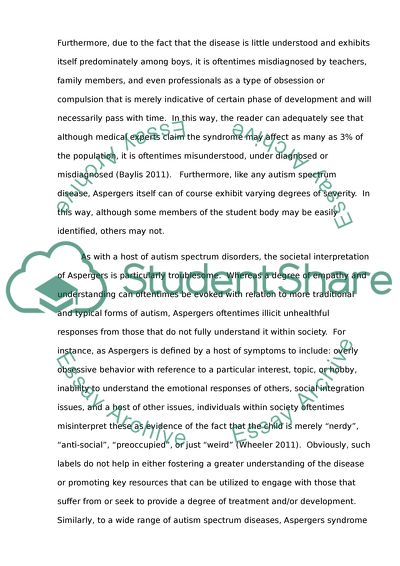Cite this document
(“Asperger's Syndrome: An analysis of the disease and key insights into Research Paper”, n.d.)
Asperger's Syndrome: An analysis of the disease and key insights into Research Paper. Retrieved from https://studentshare.org/education/1403169-special-education
Asperger's Syndrome: An analysis of the disease and key insights into Research Paper. Retrieved from https://studentshare.org/education/1403169-special-education
(Asperger'S Syndrome: An Analysis of the Disease and Key Insights into Research Paper)
Asperger'S Syndrome: An Analysis of the Disease and Key Insights into Research Paper. https://studentshare.org/education/1403169-special-education.
Asperger'S Syndrome: An Analysis of the Disease and Key Insights into Research Paper. https://studentshare.org/education/1403169-special-education.
“Asperger'S Syndrome: An Analysis of the Disease and Key Insights into Research Paper”, n.d. https://studentshare.org/education/1403169-special-education.


